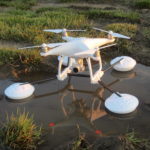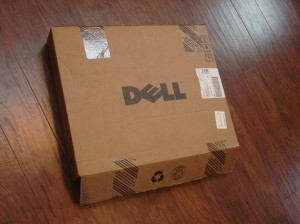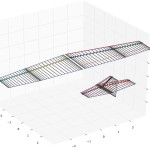A Google search for the term “industry self-regulation” quickly turns up over 87,000 hits, with much of it being bad news: from papers on how self-regulation fails to keep dangerous internet advertising from children, to articles on salmonella in peanut butter. In a culture of instant news and visual media, whole companies and even the livelihood of entire towns (e.g. Peanut City, Georgia or Toy Paint City, China) wax and wane based on two things: industry sustainability, and the media. Today most of the general public hasn’t heard about LSA or Sport Pilot, despite the fact that our own spouses suffer from information overload on the topic. And while the goal is to revitalize and provide new cost-effective entryways to aviation, the idea is to do it without having LSA show up on the 11 o’clock news.
After working with regulating and advocacy organizations for at least a decade, the LSA industry in its pre-adolescent state has gotten the car keys from mom and dad. The question is, will we chin up to responsibility, get legitimate, and enjoy our newfound flexibility — or will we wreck with the freedom we have received?
According to Harvard Business author Michael Toffel “there are four angles [to industry self-regulation]: how the rules are designed, who adopts them, whether and how compliance is monitored, and whether these rules actually achieve what they purport to achieve.” How has the LSA industry stepped up in these four areas? First, the ASTM standards process has received accolades and has moved the standards development process at a lightning-quick pace, enabling the industry to even exist. Next, the “who” of adaptation includes over 60 manufacturers of thousands of registered LSA at the time of authoring this paper. The third area — compliance monitoring — is where we will linger for the rest of this white paper.
Imagine you are getting ready to engage in combat. Your product and savvy are your offensive weapons and your compliance to regulatory expectations, as legal protection, is your defense. Historically, the ASTM consensus standard approach provides very good protection, if the product and manufacturer are truly compliant. Despite the popular notion that auditors are “the bad guy,” auditors and their audits provide needed testing and proving for sustained industry legitimacy and public confidence. Just as a team’s defense or soldier’s defense is tested either with “drills” or with real games and combat, audits test a company’s defense and adds confidence that under fire, a manufacturer’s statement of compliance will hold. According to ASTM legal counsel, in cases where independent, third-party verification of compliance was completed, this protection resulted in some cases never even making it to court.
So what are the characteristics of a sound, third-party audit program that will gain the respect of both legislative and judicial branches of the government? In other industries dealing with public safety such as food or amusement rides, water-tightness is not necessarily the expectation. Humans are clearly imperfect and the industries we create and sustain are done so imperfectly. One characteristic of effective compliance monitoring is that problems are identified and corrective action is taken. Another is that a healthy pattern with response to change in the industry and standards is established. Finally, a third characteristic of a successful oversight program is the fostering of a general attitude of responsibility and due diligence which is publicly exhibited.
The state of the LSA industry will clearly impact the way a penetrating audit program is designed. Today’s oversight has different needs and requirements than the oversight for more established industries, or for what the LSA industry will need ten years from now. The idea is to show that we can be responsible: that we are trustworthy to declare compliance, willing to be examined, and willing to correct any shortcomings.
The LAMA audit program, an effort recognized by the FAA, has been designed with these requirements in mind. The approach itself is two-pronged, consisting of a Compliance Check and an On-Site Check. The Compliance Check is typically the initial focus, involving a comprehensive check of verifiable compliance materials. An On-Site Check follows, which involves a spot-check of the facilities, including compliance to quality systems requirements and continued airworthiness standards.
Upon signing up for a LAMA audit, a manufacturer is asked to provide verifiable evidence for each and every requirement of the standards against which the audit is being conducted. This doesn’t mean that a long-time employee says to the auditor, “we have a fleet of 100 planes and haven’t seen a problem yet,” or “that landing gear member is so thick, there is no way it will bend.” It means that each requirement is addressed objectively. And the flexibility of the standards today makes this possible and affordable. Passing the LAMA audit not only puts the manufacturer in an improved legal position, but is just another pixel in the collective picture of good standing in the eyes of the consumer and our governing agencies.
In the case that major findings are determined during an audit, LAMA has structured tools and programs in place to help solve manufacturers’ compliance issues. Whether that means coaching the writing of a missing report or conducting additional testing or analysis, the audit team has cost effective resources at its fingertips. The aim of the LAMA audit program is to develop a healthy pattern of problem identification and cost-effective and efficient correction.
Recertification audits are completed periodically and cover areas of question, or of change to either the product or the standards. A focused, third party organization like LAMA can keep up with a dynamic and rapidly developing industry, helping manufacturers keep verifiable evidence for their compliance current. Just as a flight review completed every other year by pilots can help sharpen skills, develop new ones, or awaken a pilot to unknown dullness, these recertification audits add confidence to manufacturers who have already passed the initial two-part LAMA audit.
So we arrive at the fourth aspect of LSA self-regulation: is the industry achieving what the rules and rule-makers purport to achieve? Long, long ago in a land not too far from where you are now, many men and women started the work of dreaming and incubating the idea of an affordable way to fly simple aircraft. The LSA industry self-regulation journey walks a fine line between industry legitimacy, public reputation, and the flexibility, affordability, and accessibility of the aircraft. The answer to whether LSA will successfully and sustainably achieve this high calling is up to you. If you are an aircraft manufacturer or importer, will you advance public and governmental confidence by engaging the LAMA audit program?
If this article was helpful to you or for more information on this or other topics, please contact us.










